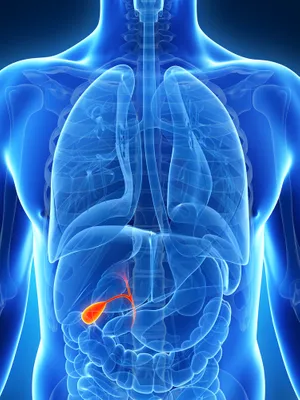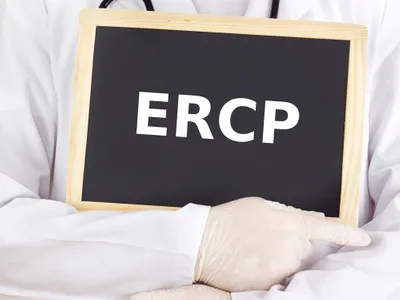As the name suggests, gallstones are tiny stones that build up inside the gallbladder. These stones, which are typically composed of cholesterol, don’t always cause significant health issues, but when they do the treatments range from mild (dietary changes) to intense (surgery).
Problems typically arise when the stones get stuck in a part of the gallbladder that prevents proper functionality. For example, if a stone becomes lodged in the opening duct of the gallbladder, it can result in immediate and acute pain that can last for hours at a time. Additionally, if the stones lead to inflammation of the gallbladder, a condition known as cholecystitis, the patient may experience fever and jaundice in addition to pain. So, what treatment options are available to individuals with gallstone issues?
1. Keyhole surgery
The good news about having a gallbladder that isn’t functioning properly? If necessary, it can be removed from the body entirely. Even better: after the gallbladder is removed, the patient should experience a full recovery.
If removal of the gallbladder is deemed necessary, physicians may decide to take it out using keyhole surgery, otherwise known as laparoscopic cholecystectomy. In this type of procedure, only a few small cuts are made in order to remove the gallbladder. Doctors then inflate the abdomen, using carbon dioxide gas, in order to make it easier to see and remove the gallbladder. Keyhole surgery can also be used to remove gallstones from the ducts connecting the gallbladder to other parts of the body. Should everything go well, the patient should be mostly recovered after a couple weeks.
2. Single-incision surgery
Generally speaking, keyhole surgery to remove the gallbladder requires a few cuts in order to carefully find and successfully take out the organ. However, in some cases it may be possible to make a single incision in order to complete the procedure. The benefits of single-incision surgery are clear: it makes it possible to have a much shorter recovery time and limits the possibility of complications. It can also limit the amount of scarring resulting from the surgery.
Unfortunately, not all patients requiring help with their gallbladders qualify for single-incision surgery. In addition, the healthcare facility performing the procedure must have a surgeon with extensive experience carrying out gallbladder removal surgeries. For these reasons, it can be difficult for patients to access single-incision surgery.
3. Open surgery
Ideally, a patient experiencing gallstone problems requiring surgery will qualify for keyhole or single-incision surgeries, which require only a few cuts (or less), thereby limiting the chance of complication and shortening the recovery window.
However, many patients will not qualify for these types of surgeries. For example, women in the final stage of their pregnancy and very overweight people may not have the body structure required for these types of procedures. Additionally, people with more complicated gallbladder problems — such as those with issues involving the actual structure of the gallbladder or its connecting tissues — may require open surgery, which may involve an incision of four to six inches.
4. Endoscopic retrograde cholangio-pancreatography (ERCP)
If the problem affecting the gallbladder is not sufficient enough to require complete and total removal of the gallbladder, then physicians may recommend ECRP, a procedure that involves eliminating gallstones from the tissue surrounding the gallbladder.
To complete this procedure, doctors use a tool known as an endoscope, which is a long and highly flexible tune connected to a small camera. With the endoscope providing surgeons with a full view of the gallbladder, they make tiny incisions in the bile duct surrounding the organ and remove any gallstones. For patients, the benefit of this type of surgery is its length (sometimes an hour or less) and its relatively short recovery time.
5. Medications
Patients with less severe gallbladder issues may be able to recover using only medications designed to help dissolve gallstones. Typically, this is only possible where the gallstones have not developed to the point where they contain calcium.
Although using medications is preferable over surgery, this strategy isn’t always successful, for a few reasons. For one, these medications are only effective some of the time. Second, they can take months or even years to have a visible impact on the patient’s gallbladder. Finally, medications may not completely remove the problem, meaning gallstones may return later on.
6. Dietary changes
It can take months or even years before a patient can undergo surgery to remove gallstones or their entire gallbladder. In the meantime, they can make some changes to their diet that could help alleviate their symptoms. Additionally, in cases where the gallbladder problems are fairly mild, dietary changes may be all that’s necessary.
Because gallstones tend to be made up of cholesterol, doctors will often insist on their patients following a low-fat diet. This means patients will be required to eat a healthy diet consisting of lean protein and lots of fruits and vegetables. In certain cases these dietary adjustments can have a significant impact on a patient’s symptoms, though many patients will eventually require more involved procedures, such as surgery.









